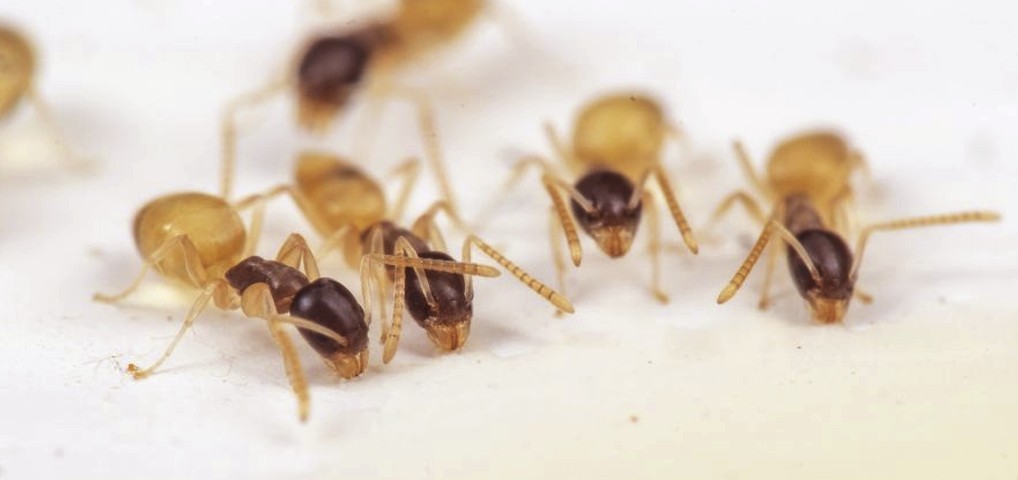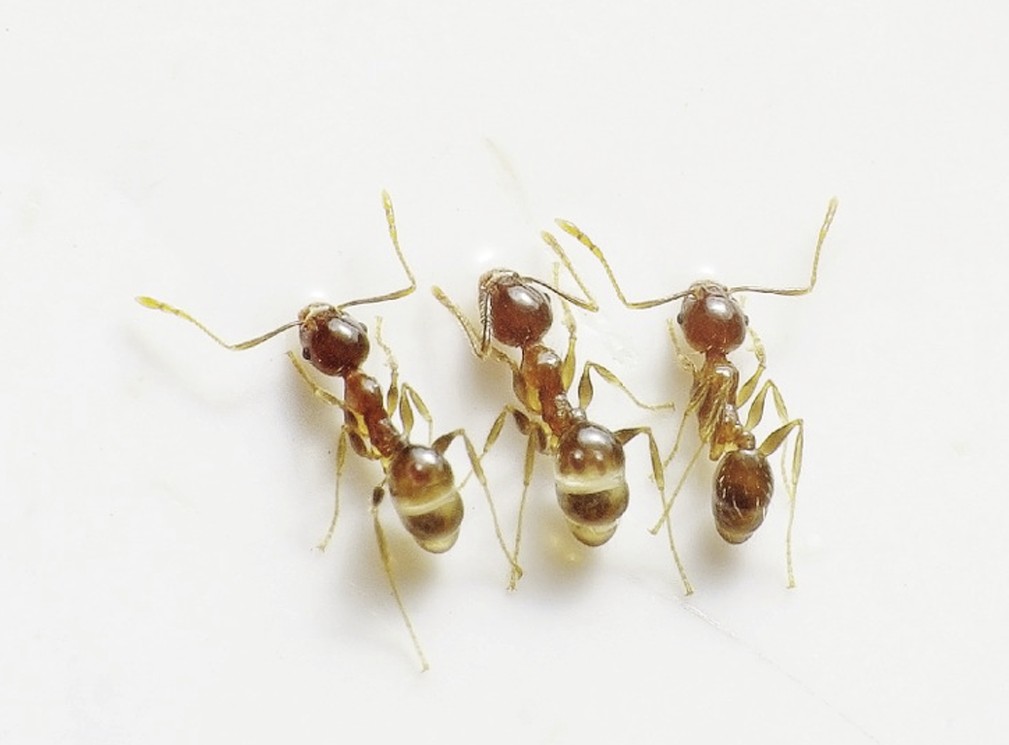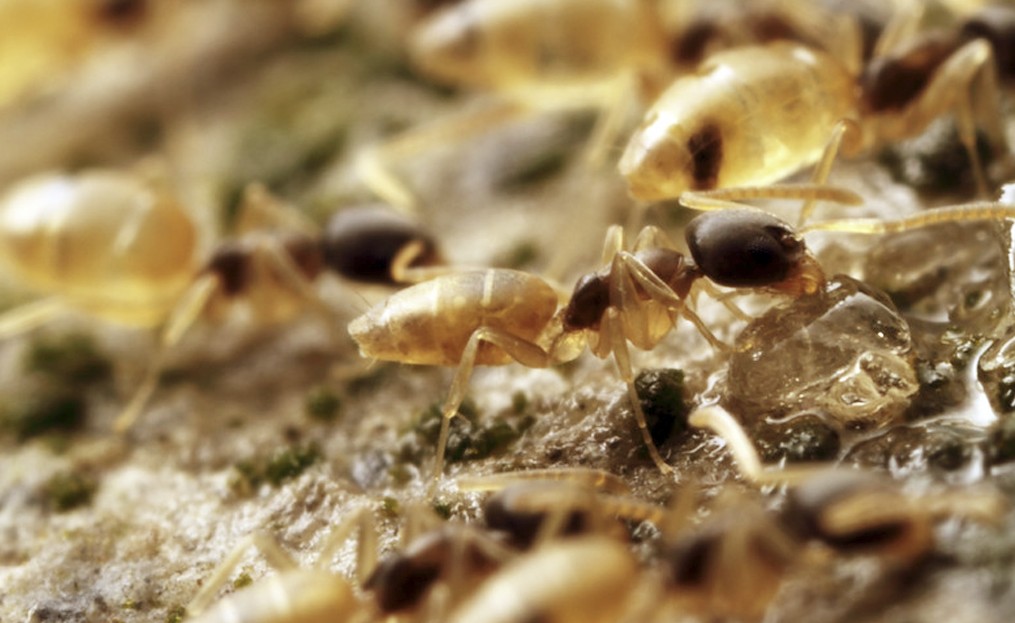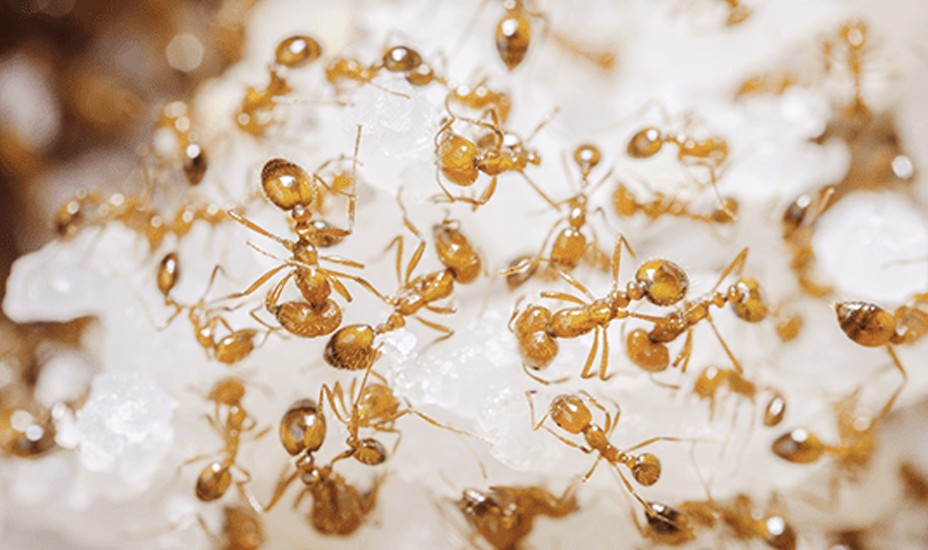Ghost Ants
What are Ghost Ants?
Ghost ants, associated with odorous house ants, are small creatures and can easily enter your house through openings around the door and window. Even the cracks in foundations lead them straight inside your dwelling. In fact, these insects are occasionally brought inside the house on infested plants. Once they have made their way inside, they eat several things, such as cereal, syrup, and sugar. Also, these bugs can often be found on bathroom or kitchen counters and not to mention, sinks too.

Ghost ants have got their common name from the fact that they make one have a hard time spotting them, due to their small size and whitish color. Being a tropical species, these ants are probably a native of Asia or Africa. However, they are found mostly in central and southern Florida and Hawaii. This type of ants cannot survive in the northern part of the country, apart from heated spaces as well as greenhouses.
These critters are extremely flexible in their nesting habits that seem to bear a resemblance to those of pharaoh ants. The colonies of these ants can be medium to large, and they can consist of hundreds of thousands of workers. Several operating queens are scattered across several nesting sites. With a fondness for honeydew, they have a fetish for dead and living insects as well. They prefer sugary food items and most commonly found in a homeowner’s kitchen.
In the ant world, ghost ants seem to be cool. As mentioned above, these pests have got their name from their lucent abdomen and legs that disappear into thin air when seeking light surfaces. And, the coolness factor of the ghost ant might come as a surprise to you, as you can see the color of the food they feed on.
The fact cannot be held for denial that these bugs are extremely flexible nesters with an ability to live both indoors and outdoors. Ghost ants make their nests in the ground close to logs, woodpiles or stones when they are outside. Even damp grass and plant stems are an excellent source for these annoying little critters to seek shelter in the form of a nest.
Appearance and Identification

Being tiny in size, nasty ghost ants appear out of nowhere and quickly disappear before you even know it. Not only are they found inside the house, but they can be found outside as well. They seek out moisture, and what can be the most suitable places for them other than kitchens and bathrooms?
The gaster, pedicel, antennae, and legs are colorless, almost transparent in color. The head and thorax, on the other hand, are dark. This is the reason why the Ghost Ant is also called the Black-Headed Ant in some regions.
If you try to spot these ants, you will find it difficult to do so, as they are pale and awfully tiny. In fact, worker ghost ants also have the same size. However, ghost ants can be easily differentiated from any other species of ants by considering the features listed below.
- Hairless
- Head and thorax are dark. Other parts, including legs, antennae, and abdomen, are pale milky white.
- No Sting
- Antennae are separated into 12 segments that progressively thicker closer to the tip
Even though these sickening ghost ants (Tapinoma melanocephalum) seem like odorous house ants, the latter is entirely black or brown in color. They have dark heads as well as thoraxes, and the workers are roughly 1.3 to 1.5mm long. Like the odorous house ants, ghost ants release a coconut-like smell when they’re crushed.
What Are Ghost Ants Attracted to?
Ghost ants are attracted to warmth, moisture and sweet as well as greasy foodstuff.
There is no doubt that these bugs are biased towards sugary food items, especially honeydew and aphids. The workers go out to look for food, such as insects, so that they can bring it back for feeding the entire colony. Ghost ants eat sweet foods when they are inside. But, they give more preference to greasy food, if it’s available.
How Dangerous Are Ghost Ants?
Ghost ants are not dangerous at all. So, there is no need to worry about them biting you because they do not sting. However, they can not only spread more quickly, but they expand their colonies in a couple of days if they are not taken care of.
Moreover, they can expediently become accustomed to every corner of your house. These horrible ants, being a real pain in the neck, are a real nuisance to your eyes, because you cannot bear their sight even for one minute.
The increasing number and constant hunt for food as well as water supply can contaminate your stored food. Also though they are not as stinking as the odorous house ants, ghost ants emit a peculiar coconut-like smell upon being crushed.
Control Guide: How to Get Rid of Ghost Ants?
Well, the majority of homeowners prefer picking up their phones to hire a professional pest service provider (exterminator) to help them get rid of these nasty ants once and for all. But, there are a couple of easy to follow and simple steps that have proven effective enough in eliminating these unwanted guests in your house.
Understanding the Diet
When it comes to eliminating ghost ants, it’s good to find out why these bugs have invaded your home. Occasionally known as “sugar ants,” these insects are fond of sugary stuff. Honeydew, which is a sugary gluey liquid and made by aphids, attracts them the most. They are on their quest for sources rich in protein, including dead insects and several decaying organic materials.
If you are looking to get rid of these ants from your home, securing all your sweet items at home is a smart move. Make sure you place honey, maple syrup, and sugar in containers that are sealed properly. Don’t forget to wipe or mop your tables, cabinet drawers, sinks, and cupboards.
Identify Every Entry Point
This step seems more like a cakewalk. You need to set eyes on an ant trail inside the house. Following the trail will help you find out how these creatures get into your home. There can be gaps, cracks, crevices, and holes that can be found in most homes. Once these entry points have been identified, make sure to have them sealed off using caulk.
Look for Nesting Spots (Indoor and Outdoor)
There can be a possibility that these ants have found their shelter not only indoors, but outside as well, such as patio, garden, lawn, front/back yard or porch. Go after the ant trail from the inside of your home, leading to any of these areas. No doubt these creatures create their colonies beneath damp and decaying organic materials, including logs, branches, and leaves. As well, they can be found along pavements and under stones.
Not able to locate a trail leading to any of the areas mentioned above? Perhaps, these insects have found a safe shelter somewhere inside your house. Ghost ants can also create their colonies beneath the floor and behind walls. Moreover, they can be found in corners that are hard for you to reach.
Some Useful Tips for Control
This species of ants, although not impossible, is probably hard to control. And, laying out the bait against these critters is probably not very effective. The only way you can control ghost ants is to find their colonies and sub-colonies so that they can be treated directly. If you are not able to locate a ghost ant in any colony in your house, you may try to lay bait. However, you may require a myriad of baits to be successful.
Make sure you conduct inspections at regular intervals and hiring professional services as well. Doing so is necessary not only to find but also to treat a new colony as and when it moves in your house from the nearby property. Calling in a professional pest service provider will be a good thing to do, as their quick, honest and reliable services are extremely beneficial and effective when it comes to having a close encounter with these troublemakers.
Below is a list of some of the most useful tips that will help you tackle such a nuisance in and around your home.
- Get rid of bricks, lumber, and debris from your home. All these allow these ants to make them their nesting site.
- Make sure the sprinkler system does not spray directly onto the base.
- Consider sealing as many cracks as you come across in the exterior of your home.
- Prevent tree as well as shrub branches from touching your house, because these ants can easily find a way inside.
Natural Ant Killers
How about giving a try to natural ant killers? Some old ingredients show their true colors when it comes to eliminating indoor ghost ants. There are some of the most effective homemade ant killers that can eradicate these bugs without hassles or causing you any inconvenience. Some of these include:
- Boric Acid
- Diatomaceous Earth
- Baking Powder
Apart from these, there are several ant killers that you can consider using. They are simple and natural ways of eradicating (ghost) ants and don’t cost an arm and a leg. Once ingested, ghost ants will pass through until they die.
You can get rid of the infestation by ghost ants by spraying any ant mound you come across with insecticides. NEVER use sprays inside your home. Doing so will not only separate the colony but make the infestation worse. If you want to remove ghost ants, make sure you use protein baits, as they are very effective.
Pictures
Collection of few more Pictures of Ghost Ants:



Prevention
There are some prevention tips that must consider. A complete inspection is necessary, and the first step in keeping ghost ants’ problems from occurring.
- Search for places that might catch the attention of ghost ants around the home exteriors.
- Ensure that the firewood piles are moved away from the house.
- Make sure exterior doors close tightly.
- It’s good to replace weather stripping where it seems missing.
- Those residing in brick houses place a great emphasis on placing small squares of plastic screen into seep holes to prevent these critters from using them as entry points.
Well, reducing the number of food sources in and around your home is the most effective way to keep ghost ants from entering your house. Maintaining a garden? If so, then make sure you keep your trees as well as shrubs trimmed in a proper way.
Facts
Ghost ants are found in 154 geographical areas in the world.
- Earliest traces of ghost ants were found in 1887 in Hawaii (US) and Washington DC in 1894.
- Ghost ants have a dark-colored head and colorless abdomen.
- Ghost ants can be found in the summer, fall, and spring months.
- The length of ghost ants is usually 1/16 of an inch.
